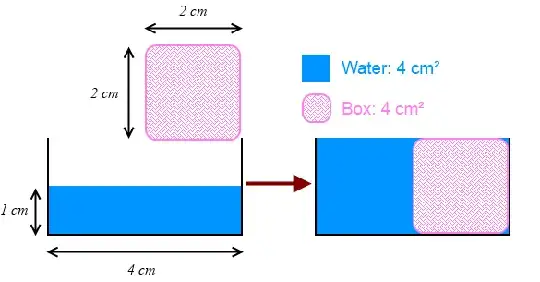All around I read that buoyancy is numerically equal to the weight of fluid displaced by a submerged object, the volume of displaced fluid being equal to that of the submerged portion (Wikipedia). However, thinking about it brought me to believe that such wording is not very good.
Consider the 2D example below of a box being sunk into water.

In this example, it is clear that the buoyancy is equal to the weight of 4 cm² of water, which is the volume of the submerged box. However, closer inspection reveals that this does not match the displaced volume.

I concluded that the common definition works well when the body of fluid is large compared to the object, such that its surface level does not change significantly upon submersion. In this case, displaced volume matches volume of submerged portion. However, for the more general case (including example above), it would be more accurate to forgo displaced volume and hang on to volume of submerged portion only.
Am I missing something here? Is the original, ubiquitous wording indeed accurate?